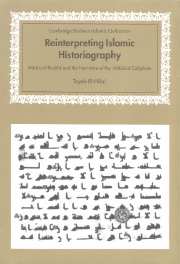Book contents
- Frontmatter
- Contents
- Acknowledgments
- List of abbreviations and note on the dates
- Genealogical table: the line of the early ʿAbbāsid caliphs
- Chapter 1 Historical background and introduction
- Chapter 2 Hārūn al-Rashīd: where it all started or ended
- Chapter 3 Al-Amīn: the challenge of regicide in Islamic memory
- Chapter 4 Al-Maʾmūn: the heretic Caliph
- Chapter 5 The structure of civil war narratives
- Chapter 6 Al-Mutawakkil: an encore of the family tragedy
- Conclusion
- Select bibliography
- Index
Chapter 1 - Historical background and introduction
Published online by Cambridge University Press: 26 June 2009
- Frontmatter
- Contents
- Acknowledgments
- List of abbreviations and note on the dates
- Genealogical table: the line of the early ʿAbbāsid caliphs
- Chapter 1 Historical background and introduction
- Chapter 2 Hārūn al-Rashīd: where it all started or ended
- Chapter 3 Al-Amīn: the challenge of regicide in Islamic memory
- Chapter 4 Al-Maʾmūn: the heretic Caliph
- Chapter 5 The structure of civil war narratives
- Chapter 6 Al-Mutawakkil: an encore of the family tragedy
- Conclusion
- Select bibliography
- Index
Summary
At its height in the ninth century AD, the ʿAbbāsid caliphate covered an extensive realm that stretched across the African and Asian continents, from the western reaches of Carthage on the Mediterranean to the Indus River Valley in the east, spanning prime regions over which the Greeks, Romans, Persians, and Turks had gone to war during the previous thousand years. This empire had come into existence as a result of of conquests that began under the early Islamic caliphate centered in Medina and its successor dynasty of the Umayyads (AD 661–750). But it was with the ʿAbbāsids that the process of social and cultural symbiosis and economic integration began to take root in this new state, giving shape to a new society characterized by the cohesive powers of a common language and currency and a unifying religio-political center.
The ʿAbbāsids, partly due to their rise as a religious millennial movement, were more conscious of their universal pretensions to power than their predecessors had been. The new caliphs, kinsmen to the Prophet through the line of his uncle al-ʿAbbās, held messianic titles that pointed to their spiritual gifts as imāms and underlined their distinct historical role in guiding the mission of government. Titles such as al-Manṣūr, al-Mahdī, al-Hādī, and al-Rashīd were variant expressions of their claims to a divine right to rule, as well as to their charismatic power, and this message was given poetic expression in the shape and denition that the ʿAbbāsids gave to their new capital.
- Type
- Chapter
- Information
- Reinterpreting Islamic HistoriographyHarun al-Rashid and the Narrative of the Abbasid Caliphate, pp. 1 - 16Publisher: Cambridge University PressPrint publication year: 1999



